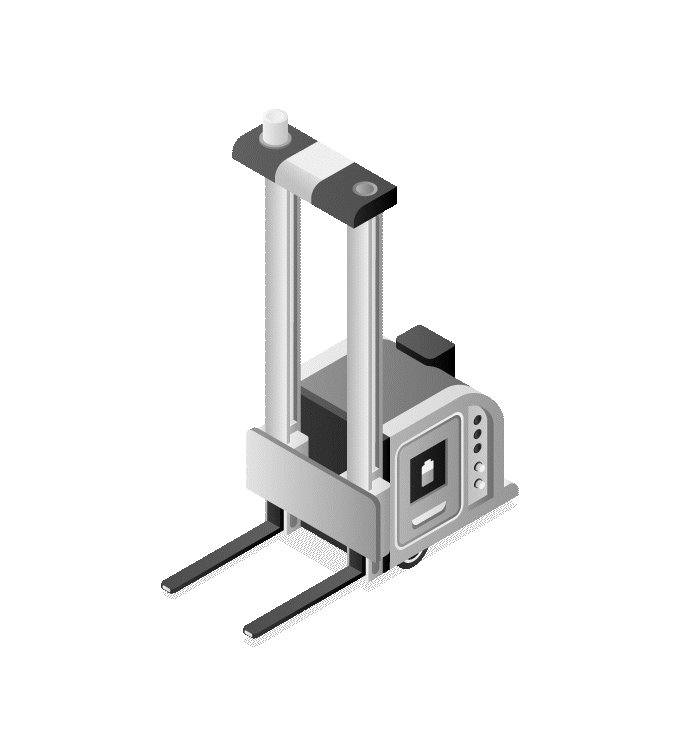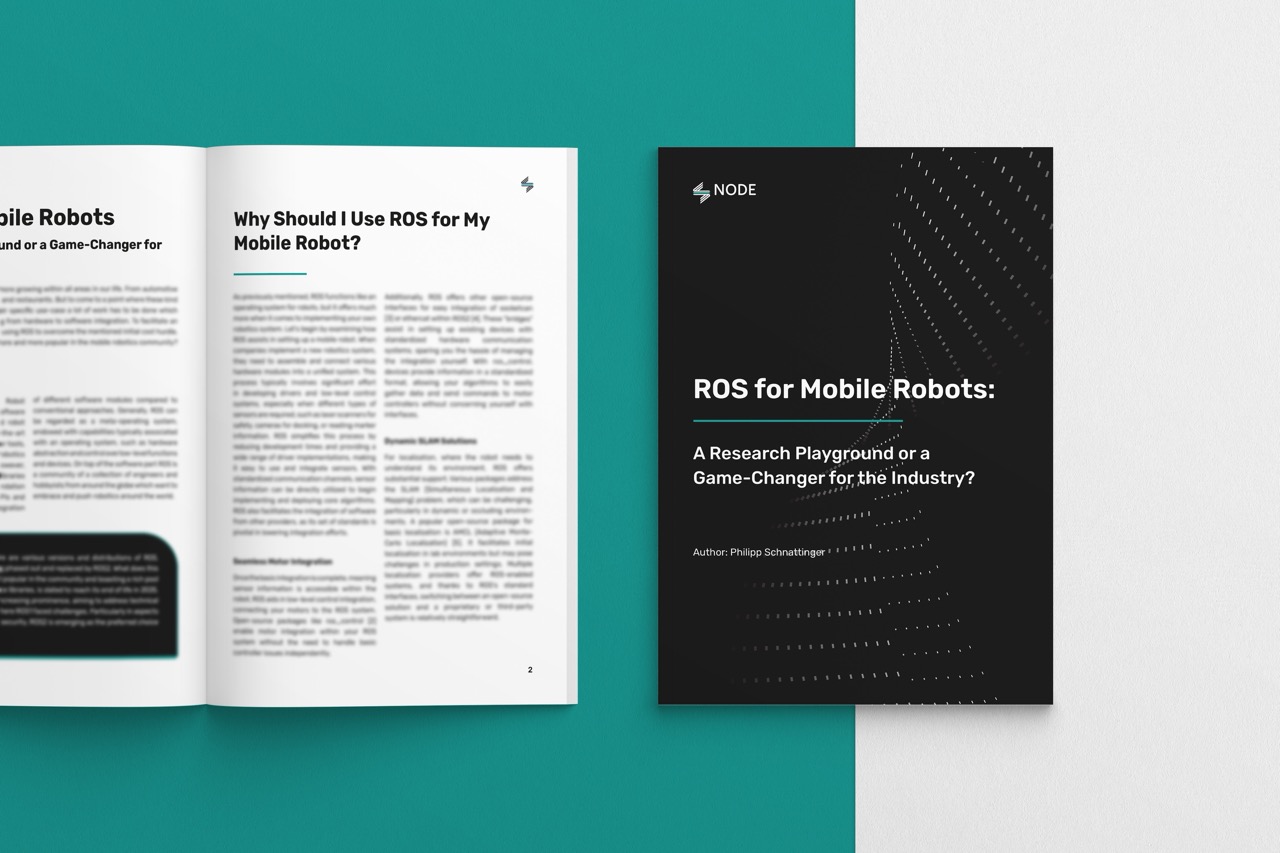
ROS (Robot Operating System) is an open-source middleware framework that supports software development for robots, providing standardized tools and libraries to facilitate communication between various robot components like sensors, motors, and cameras. Rather than acting as a traditional operating system, ROS simplifies hardware control and message-passing, enabling developers to focus on building higher-level robot functionalities without managing the underlying hardware.
At NODE Robotics, ROS has been a key part of the NODE.OS platform from its inception. By utilizing ROS as middleware, NODE.OS enables mobile robots to integrate efficiently with different environments, promoting smooth operation and adaptability. This approach also supports scalability and allows for rapid deployment, helping to accommodate advancements in robotics and AI.
Why you should use ROS:
- Flexible Development:
ROS is a powerful tool that enables developers to break down complex systems into smaller, reusable units. Each unit is capable of handling a specific task, such as sensing or moving, and can communicate with other units.
- Scalability:
ROS is the ideal choice for robotics projects of any scale. It is the most versatile robotics operating framework on the market and can be used with robots in research environments, as well as with complex industrial robots used in manufacturing and other real-world applications.
- Community Support:
ROS is an open-source framework supported by a global community. It provides a range of pre-built packages for tasks such as navigation and manipulation, allowing for the reuse of existing components and potentially reducing development time.
- Industrial Adoption:
ROS is a commonly used technology in both academic and industrial settings. For researchers, it offers a flexible platform for developing and testing algorithms without requiring direct control over low-level robotic systems.
In industrial applications, ROS supports autonomous robots in sectors such as manufacturing, logistics, and agriculture. It is particularly beneficial for robots that need to navigate environments, manipulate objects, or perform complex, multistep tasks.
The increasing adoption of ROS 2 is positioning it as a standard for autonomous mobile robotics, supporting safe and efficient operation in real-time, mission-critical environments. Additionally, ROS 2 improves communication security, making it suitable for applications where reliability and safety are essential.
At NODE Robotics, we help customers integrate ROS into their robotic systems through a process called ROSification. This unlocks the flexibility, scalability, and advanced features of ROS, enhancing robot performance and operational efficiency.
Our ROSification services include:
- Implementation of ROS Driver Layer:
We implement the ROS driver layer on Autonomous Mobile Robots (AMRs), enabling them to communicate and interact with ROS-compatible hardware and software.
- Integration of Sensors:
We integrate LiDAR, camera, and other standard sensors into ROS for real-time data processing.
- URDF Model Setup:
Creation of the Unified Robot Description Format (URDF) model to define the robot’s physical characteristics for ROS-based simulations and control.
- Development of Interfaces:
We develop a UDP-based interface (other protocols also supported) between IPC/ROS and PLC or other control systems for exchanging speed, odometry, and status information. (PLC-side interface implementation not included). We are happy to share our interface definition with you and make a proposal.
- Robot Bring-Up Layer Configuration:
Configuration of the robot bring-up layer to manage the startup processes and overall control of the robot system.
- Motor Drivers Integration:
Integration of motor drivers, if required, to ensure smooth control and operation within the ROS environment.


Integrating new mobile robot systems can be complex and resource-intensive. ROS provides a framework that simplifies this process and helps reduce associated challenges.
The whitepaper on ROS discusses how this middleware supports integration, scalability, and advanced functionalities in mobile robotics systems.
Download the whitepaper to discover how ROS can transform your robotics strategy!